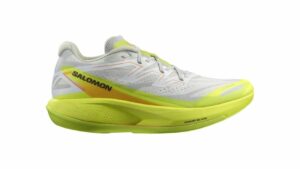Runner’s diarrhea: a Tik Tok doctor’s advice for avoiding the porta-potty blues
A doctor gives advice to a TikToker who exploded over the Internet (and inside a portable bathroom)

Max Zavidow, a TikToker from Tenafly, N.J., faced every runner’s worst nightmare while running last month’s Boston Marathon: runner’s diarrhea. Unfortunately, this is an ordinary reality for marathoners, since strenuous exercise can lead to inflammation in runners’ digestive tracts that causes diarrhea, says Dr. Zachary Rubin, a pediatrician and (another) viral TikToker.
Running for the bathroom
In his follow-up TikTok that addresses Zavidow’s “incident” (which he filmed in the porta-potty, complete with sound effects), Rubin explains just how common runner’s diarrhea can be. “A study published that looked at 109 distance runners…over 60 per cent of them had to stop to have a bowel movement during their training period and there were over 10 per cent of individuals that had a bloody bowel movement while they were competing,” he says.
@rubin_allergy @Max Zavidow What is runner’s diarrhea? This happens more often than you may think. General educational purposes only. #running #diarrhea #tiktokdoc #learnontiktok @Max Zavidow
“The joys of running,” Zavidow quipped.
Zavidow’s intimate and arguably entertaining ordeal in the porta potty, which took effect 14 miles (22.5 km) into the Boston Marathon, wasn’t exactly shocking to seasoned runners. Diarrhea is widely known as a side effect of long-distance running, and is often a source of laughter among running communities (as seen in the video below).
What is runner’s diarrhea?
Runner’s diarrhea, also known as “runner’s trots,” is loose or frequent bowel movements during or after a run. Some common symptoms include bloating, diarrhea, cramps, heartburn, nausea, chest pain, and, worst of all, an inability to control bowel movements. While most common among long-distance runners, runner’s diarrhea does not discriminate. If preventive measures are not taken, it can happen at any time, any pace, and any running distance.

That’s why, before embarking on your next race, we recommend these four ways to avoid being a victim of “the runs.”
- Gut Training: Practise consuming 60-90 g/hour of carbohydrate during training runs so that your gut has an increased tolerance, come race day. For instance, try fuelling on a long, slow run weeks before your race to see how your body adapts.
- Limit caffeine: For three to six hours before running, limit your consumption of caffeine (coffee or tea), as it’s a diuretic that also stimulates pressure in the anus, which can increase the urge to poop.
- Avoid fibre: Do not consume excessive fibre the day before and morning of a race, because they can cause gastrointestinal upset and slow absorption of the energy you need to perform. (High-fibre foods include beans, whole grains, bran, fruit and salad.)
- Hydrate: Drink loads of water (not warm water, as that can speed food through the digestive tract) before and during your run. (Dehydration may lead to diarrhea.)


